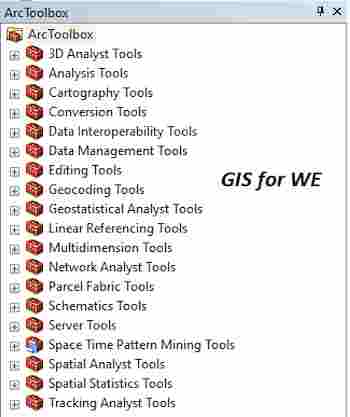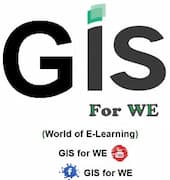Emerging Hot Spot Analysis Tool
أداة تحليل النقاط
الساخنة الناشئة
ArcMap
ArcGIS
How to use Emerging Hot
Spot Analysis Tool in Arc Toolbox??
كيفية استخدام أداة تحليل النقاط الساخنة الناشئة ؟؟
Path to access the toolمسار الوصول الى الأداة
:
Emerging Hot Spot Analysis Tool, Space Time Pattern Mining Tools Toolbox

Emerging Hot Spot Analysis
Identifies trends in the
clustering of point densities (counts) or summary fields in a space-time cube
created using the Create Space Time Cube By Aggregating Points tool. Categories
include new, consecutive, intensifying, persistent, diminishing, sporadic,
oscillating, and historical hot and cold spots.
يحدد الاتجاهات في تجميع كثافات النقطة (الأعداد)
أو حقول التلخيص في مكعب الزمكان الذي تم إنشاؤه باستخدام أداة Create Space Time Cube By Aggregating Points. تشمل الفئات الجديدة ،
المتتالية ، المكثفة ، المستمرة ، المتناقصة ، المتقطعة ، المتأرجحة ، والتاريخية
الساخنة والباردة.
1.
Input Space Time Cube إدخال مكعب
وقت الفضاء
The netCDF cube to be
analyzed. This file must have an (.nc) extension and must have been created
using the Create Space Time Cube By Aggregating Points tool.
مكعب netCDF
المراد تحليله. يجب أن يكون لهذا الملف امتداد (.nc) ويجب
أن يكون قد تم إنشاؤه باستخدام أداة تكوين مكعب وقت الفضاء حسب تجميع النقاط.
Analysis Variable
The numeric variable in the netCDF file you want to analyze.
Output Features
The output feature class results. This feature class will be a
two-dimensional map representation of the hot and cold spot trends in your
data. It will show, for example, any new or intensifying hot spots.
Neighborhood Distance (optional)
The spatial extent of the analysis neighborhood. This value determines
which features are analyzed together in order to assess local space-time
clustering.
Neighborhood Time Step (optional)
The number of time-step intervals to include in the analysis neighborhood.
This value determines which features are analyzed together in order to assess
local space-time clustering.
Polygon Analysis Mask (optional)
A polygon feature layer with one or more polygons defining the analysis
study area. You would use a polygon analysis mask to exclude a large lake from
the analysis, for example. Bins defined in the Input Space Time Cube that fall
outside of the mask will not be included in the analysis.
2.
Analysis Variable متغير التحليل
The numeric variable in
the netCDF file you want to analyze.
المتغير الرقمي في ملف netCDF الذي
تريد تحليله.
Output Features
The output feature class results. This feature class will be a
two-dimensional map representation of the hot and cold spot trends in your
data. It will show, for example, any new or intensifying hot spots.
Neighborhood Distance (optional)
The spatial extent of the analysis neighborhood. This value determines
which features are analyzed together in order to assess local space-time
clustering.
Neighborhood Time Step (optional)
The number of time-step intervals to include in the analysis neighborhood.
This value determines which features are analyzed together in order to assess
local space-time clustering.
Polygon Analysis Mask (optional)
A polygon feature layer with one or more polygons defining the analysis
study area. You would use a polygon analysis mask to exclude a large lake from
the analysis, for example. Bins defined in the Input Space Time Cube that fall
outside of the mask will not be included in the analysis.
3.
Output Features المعالم المخرجة
The output feature class
results. This feature class will be a two-dimensional map representation of the
hot and cold spot trends in your data. It will show, for example, any new or
intensifying hot spots.
نتائج فئة معلم الإخراج. ستكون فئة المعالم هذه
عبارة عن خريطة تمثيل ثنائي الأبعاد لاتجاهات النقاط الساخنة والباردة في بياناتك.
ستظهر ، على سبيل المثال ، أي نقاط ساخنة جديدة أو مكثفة.
Neighborhood Distance (optional)
The spatial extent of the analysis neighborhood. This value determines
which features are analyzed together in order to assess local space-time
clustering.
Neighborhood Time Step (optional)
The number of time-step intervals to include in the analysis neighborhood.
This value determines which features are analyzed together in order to assess
local space-time clustering.
Polygon Analysis Mask (optional)
A polygon feature layer with one or more polygons defining the analysis
study area. You would use a polygon analysis mask to exclude a large lake from
the analysis, for example. Bins defined in the Input Space Time Cube that fall
outside of the mask will not be included in the analysis.
4.
Neighborhood Distance (optional) مسافة
الجوار (اختياري)
The spatial extent of
the analysis neighborhood. This value determines which features are analyzed
together in order to assess local space-time clustering.
المدى المكاني لحي التحليل. تحدد هذه القيمة
الميزات التي يتم تحليلها معًا من أجل تقييم مجموعات الزمكان المحلية.
Neighborhood Time Step (optional)
The number of time-step intervals to include in the analysis neighborhood.
This value determines which features are analyzed together in order to assess
local space-time clustering.
Polygon Analysis Mask (optional)
A polygon feature layer with one or more polygons defining the analysis
study area. You would use a polygon analysis mask to exclude a large lake from
the analysis, for example. Bins defined in the Input Space Time Cube that fall
outside of the mask will not be included in the analysis.
5.
Neighborhood Time Step (optional) الخطوة
الزمنية في الجوار (اختياري)
The number of time-step
intervals to include in the analysis neighborhood. This value determines which
features are analyzed together in order to assess local space-time clustering.
عدد فترات الخطوات الزمنية المطلوب تضمينها في حي
التحليل. تحدد هذه القيمة الميزات التي يتم تحليلها معًا من أجل تقييم مجموعات
الزمكان المحلية.
Polygon Analysis Mask (optional)
A polygon feature layer with one or more polygons defining the analysis
study area. You would use a polygon analysis mask to exclude a large lake from
the analysis, for example. Bins defined in the Input Space Time Cube that fall
outside of the mask will not be included in the analysis.
6.
Polygon Analysis Mask (optional) قناع
تحليل المضلع (اختياري)
A polygon feature layer
with one or more polygons defining the analysis study area. You would use a
polygon analysis mask to exclude a large lake from the analysis, for example.
Bins defined in the Input Space Time Cube that fall outside of the mask will not
be included in the analysis.
طبقة معالم مضلعة بها مضلع واحد أو أكثر لتحديد
منطقة دراسة التحليل. يمكنك استخدام قناع تحليل مضلع لاستبعاد بحيرة كبيرة من
التحليل ، على سبيل المثال. لن يتم تضمين الصناديق المحددة في Input Space Time Cube التي تقع خارج القناع في التحليل.
اليك صفحه ومجموعة على الفيس بوك لتعلم أكثر بما يخص نظم المعلومات الجغرافية (GIS) و برنامج ArcGIS Pro من خلال هذه الروابط:
مجموعة على الفيس بوك
ArcGIS Pro من
هنا.
مجموعة على الفيس بوك
GIS for WE - ArcGIS Pro من
هنا.صفحة الفيس بوك
GIS for WE من
هنا.





تعليقات
إرسال تعليق